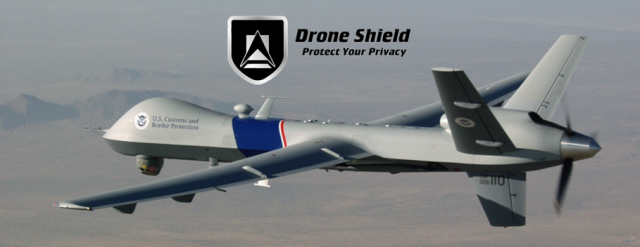
On Tuesday, an ambitious aerospace engineer from Washington, DC began seeking donations on Indiegogo to create an “open-source drone detection system.”
The Drone Shield would combine a Raspberry Pi, a signal processor, a microphone, and analysis software to scan for specific audio signatures and compare them against what known drones sound like (because obviously a Predator drone is going to sound very different from a small quadcopter.) Once a match is found, the Drone Shield then sends an e-mail or SMS to its owner. As of this writing, the campaign is only closing in on one-tenth of its goal with $301 out $3,500 raised.
John Franklin, the project’s organizer, believes it would cost around $60 to $70 to make one, but he’s hoping to raise funds from other privacy-minded citizens like himself. He notes the idea here is to counter the rising use of drones not only in foreign theaters of war, but also in domestic skies.
"I'm a problem solver and I'm trying to gauge if this is a problem that people are interested in solving,” he told Ars. “The idea here is that it becomes an open-source thing and people could contribute their own signatures.”
Franklin estimated it probably would take “about $100 and two months” to figure out if the idea would work. There are other anti-drone tactics and devices out there, but none quite as cheap as this one—assuming it functions as advertised. Not all experts are convinced.
"It would be theoretically feasible," said Chris Kyriakakis, a professor of electrical engineering at the University of Southern California with expertise in acoustic signal processing. "A lot of problems to solve, however, to make that happen. [It's] not clear if a single mic would suffice—most likely [you] would need a mic array. Noise mitigation would be another huge problem. Yes, there are dozens of feature extraction approaches that would work theoretically, but none that I have seen be effective in the presence of additive or convolutive noise."
Franklin acknowledged that the device won’t be 100 percent perfect. He also told Ars that the system would be based on existing publicly available documents, such as this 1997-era research paper from the Army Research Laboratory entitled: "Acoustic Feature Extraction for a Neural Network Classifier" (PDF). But again, his goal is an open-sourced device that an audience can build upon and improve. If the interest is there, hopefully the implementation will be too.
“This project is yet another indicator of the fact that there is very strong and widespread sentiment on the ground about drones—and it’s one of tremendous skepticism,” wrote Linda Lye, an attorney with the American Civil Liberties Union of Northern California, in an e-mail to Ars.

reader comments
101